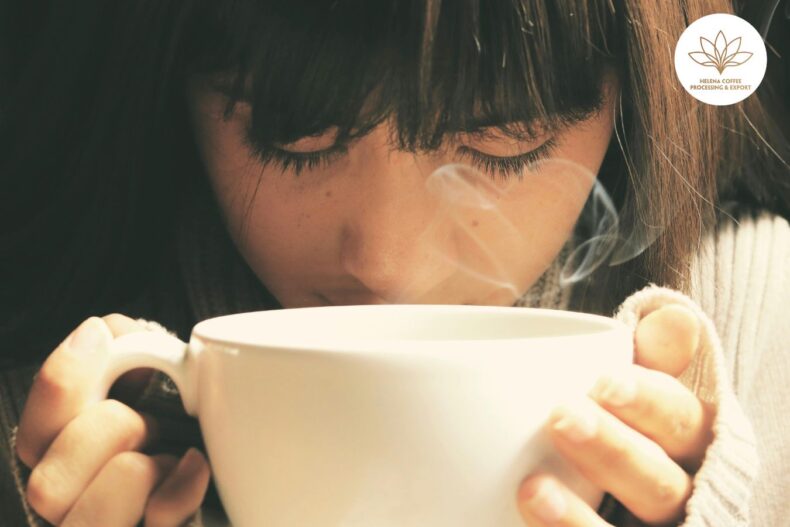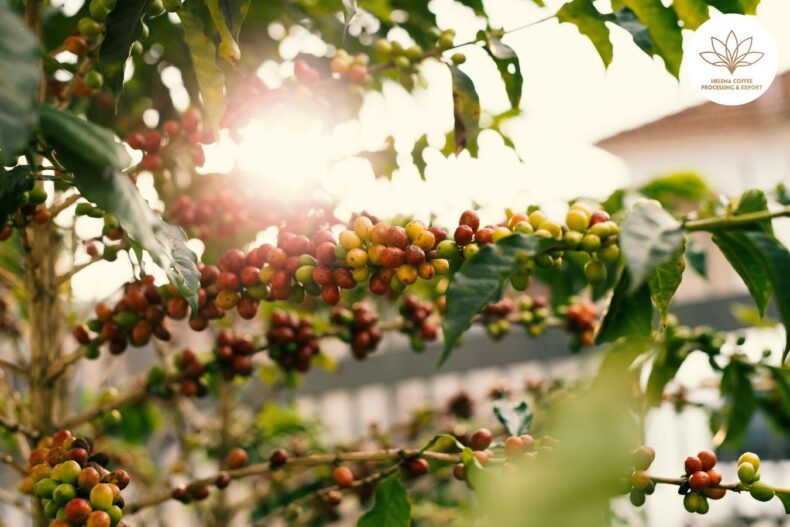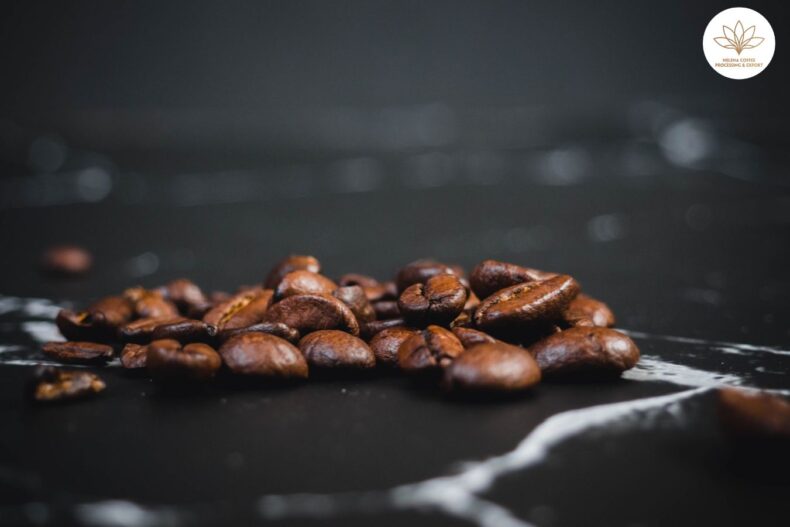
An Overview of Robusta Coffee: Dive into the fascinating realm of Robusta coffee, a variety often overshadowed by its more famous counterpart, Arabica. This article will explore this resilient coffee species’ unique characteristics, flavors, and origins. Robusta Coffee has carved a niche in the global coffee market from its hardy nature to its bold flavor profile. Join us as we uncover the secrets behind this intriguing coffee variety and its role in the world of caffeine enthusiasts.
What are Robusta Coffee beans?
There are more than 100 different types of coffee in the world today, so what makes Robusta coffee the second most popular coffee in the world? Let’s find out what it is and where it comes from!
Robusta is native to Central and Western Sahara in Africa. It is the second most popular coffee globally, accounting for more than 40% of global production.
It is second only to Arabica (from the Coffea arabica factory) remaining coffee production worldwide.
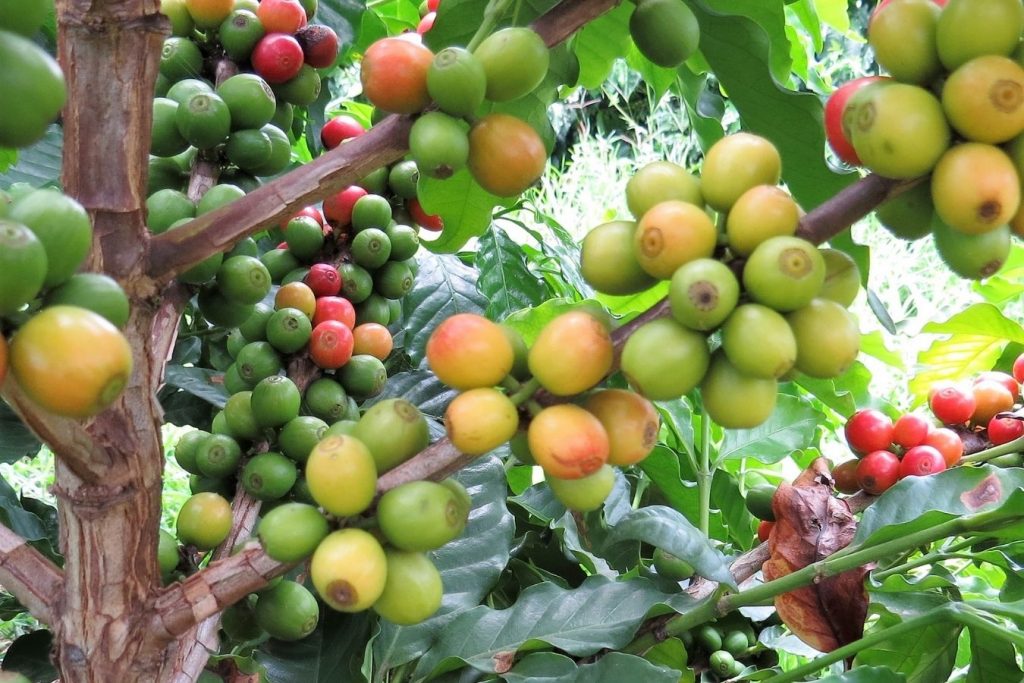
Where does Robusta coffee come from?
Robusta coffee, scientifically known as Coffea canephora, originates in the tropical regions of West and Central Africa, particularly in countries like Uganda, Cameroon, and the Democratic Republic of Congo.
However, over time, Robusta coffee cultivation has expanded to other parts of the world, including Southeast Asia, South America, and India. Today, Vietnam is the largest producer of Robusta coffee, followed by Brazil and Indonesia. This hardy coffee variety thrives in diverse climates and lower altitudes, making it a popular choice for growers in various regions across the globe.
It is commonly used in instant coffee and espresso. So, when brewing coffee for work and needing vigilance, people often turn to the latte.
How does Robusta coffee taste coffee?
Robusta coffee often has an earthy, bitter flavor and a slight peanut aftertaste. Robusta beans contain more caffeine and less natural sugar than Arabica coffee, so they have a more pungent coffee taste and more bitter taste.
Robusta coffee is known for its distinct taste profile, which is often described as more robust, more bitter, and less acidic compared to Arabica coffee. It has a full-bodied, earthy flavor with nutty and sometimes chocolatey or woody undertones. The higher caffeine content in Robusta beans, nearly twice as much as Arabica beans, contributes to the more robust taste. While some coffee drinkers appreciate the boldness of Robusta, others might find it too intense or harsh. However, when blended with Arabica beans, Robusta can add depth and balance to the overall flavor profile, resulting in a more complex and enjoyable cup of coffee.
Is Robusta coffee good?
To enjoy aromatic Robusta coffee, people often mix Robusta and Arabica. However, if only with Robusta coffee, you should determine that it will be pretty bitter but, in return, will quickly wake up and work more efficiently.
The quality of Robusta coffee can be subjective, as taste preferences vary from person to person. Robusta beans have certain characteristics that some coffee drinkers appreciate, while others might not find them appealing.
Robusta coffee has a stronger, more bitter taste and less acidity compared to Arabica coffee. Its higher caffeine content contributes to the bold and robust flavor. For those who enjoy a strong, full-bodied coffee with earthy and nutty undertones, Robusta can be a good choice.
Additionally, Robusta coffee is more resistant to pests and diseases. It can be grown in a wider range of climates and altitudes, making it a more sustainable and cost-effective option for coffee growers.
However, Arabica beans are often preferred by many coffee enthusiasts for their smoother, sweeter, and more complex flavor profile. In some cases, Robusta beans are used in blends with Arabica beans to achieve a balanced and nuanced taste.
In summary, whether Robusta coffee is considered good depends on individual taste preferences and what one is looking for in their cup of coffee.
High-quality Robusta is preferred in the homeland of espresso because it is suitable for making espresso coffee.
Overview of the coffee Robusta tree
Robusta is a small but sturdy coffee plant that can withstand high temperatures (over 30 degrees Celsius) and even on the hottest days. It is a coffee variety that likes to keep water and needs a lot of water to grow.
Suitable for growing at altitudes above 600 meters above sea level, resistant to insects and disease-causing bacteria.
The tree is about 10m tall in the wild, but it must be pruned to make it easier
to harvest when planted for harvest. The coffee flower has a natural moon color and a floral scent reminiscent of jasmine.
The coffee cherries turn dark red when ripe, and it takes about 6-8 months for the fruit to reach such maturity.
Like Arabica, the fruit on the coffee tree does not ripen evenly simultaneously. In the coffee fruit, there will be ripe and green fruits alternately. Usually, there will be 2 Robusta beans inside the cherry.
> See also: ARABICA COFFEE DEFINITIONS
How much caffeine is in Robusta?
You probably already know that the amount of caffeine in Robusta coffee is more than Arabica coffee, precisely twice as much as the rest of coffee.
* The amount of caffeine: in coffee with about 2.2 – 2.7% and arabica coffee about 1.2 – 1.5%.
The higher caffeine content in the coffee plant is one thing that makes the plant less susceptible to pests and diseases. Problems do not like the bitter taste, and the disease does not want its antibacterial properties. The higher caffeine in Robusta also creates a bitter taste in brewed coffee. Robusta coffee contains twice as much caffeine as a cup of Arabica coffee.
Where is Robusta coffee grown?
As mentioned above, Robusta coffee is most widely grown in the Eastern Hemisphere, but some also come from Central and South America.
The 13 largest Robusta producers:
Here is a list of the world’s largest Robusta producers and exporters:
- Vietnam
- Brazil
- Indonesia
- India
- Uganda
- Malaysia
- Côte d’Ivoire (Ivory Coast)
- Thailand
- Cameroon
- Philippines
- Madagascar
- Guinea
- Guatemala
When buying coffee, you need to pay attention, especially the product’s packaging mentioned by the manufacturer is Arabica coffee. Still, no matter the ratio, you will understand that Robusta coffee is brewed. The sole has a better fragrance and meets the specified quality standards. In addition, it also helps producers save a lot of costs for raw coffee.
Like the CapheFin image provided below, it was exported from Congo. I’m sure this is a blend of Robusta and Arabica coffee from the look of the beans and the taste.
But when contacting the coffee house, it is confirmed that it is not mixed coffee but 100% Arabica coffee. You will see different beam shapes, but they are Arabica beans of varying quality.
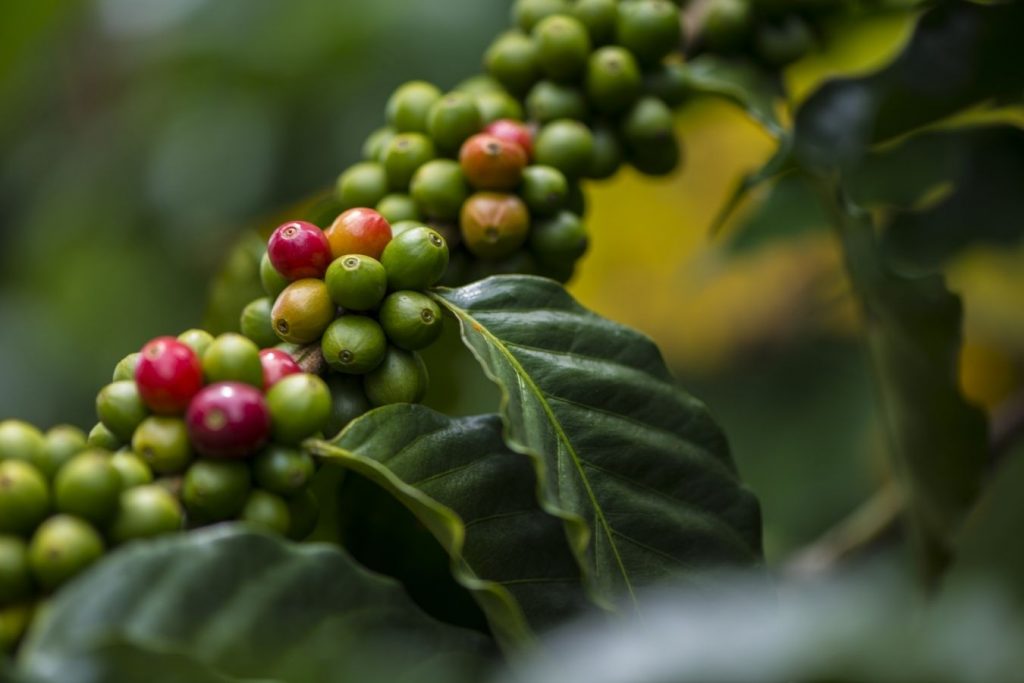
Robusta Coffee From Vietnam
You could be forgiven for not knowing that Vietnam is the world’s second-largest coffee producer.
While Brazilian, Ethiopian, and Costa Rican beans have long been popular in Western coffee shops, Vietnamese coffee has yet to make a name for itself outside of Vietnam.
This is primarily due to the type of coffee grown in Vietnam. While the other countries mentioned above primarily produce Arabica beans, Robusta is the most popular coffee variety in Vietnam.
Arabica is regarded as a high-quality bean suitable for espresso drinks, whereas Robusta has been used for less glamorous purposes, such as the production of instant coffee.
However, with producers such as Belvico bringing high-quality Robusta beans to the world, this stereotype of Robusta beans is changing.
But what exactly is Robusta coffee, and why is it so distinct from Arabica beans from other major producers? Let’s take a closer look at this intriguing coffee blend.
Developed in the Central Highlands
Vietnam’s primary coffee-producing region is the Central Highlands in the southwest.
This high-altitude region is centered on Dalat, previously used as a mountain retreat for French colonists based in Ho Chi Minh City.
Because of its high elevation, this region is much more relaxed than the lowlands near the ocean. Combined with rich volcanic soils, this creates an ideal environment for coffee cultivation.
French colonists introduced Robusta beans, and the rest is history. Vietnam is now the world’s largest producer of Robusta beans and the world’s second-largest producer of coffee overall.
Caffeine Content Is High
There are several distinctions between Robusta and Arabica coffee beans, but the caffeine content is the most notable.
Robusta beans have twice the caffeine content of Arabica beans. Because caffeine is naturally bitter, Robusta beans are bitter compared to Arabica.
Over time, this resulted in Robusta beans being over-roasted in the hope of masking the bitterness of the caffeine.
Because of their high caffeine content, Robusta beans are ideal for processing into instant coffee or pure caffeine.
Because Vietnam’s Robusta green coffee beans were primarily used for industrial purposes, quantity became far more critical than quality over time.
However, Robusta beans have a distinct flavor that can be enhanced by adequately roasting them.
Unusual Flavor
High-quality, well-roasted Robusta coffee beans have many deep and earthy flavors that can result in incredibly unique cups of coffee.
The flavors and aromas of these beans are commonly described as earthy, nutty, molasses and dark chocolate, and creamy.
The key to accomplishing this is to use high-quality beans that have been properly roasted. Belvico works directly with Central Highlands farmers to grow and select only the best Robusta beans.
These are then roasted to perfection in their roasting facility, ensuring you have the best experience with Robusta beans.
Robusta and Arabica coffee: 12 differences
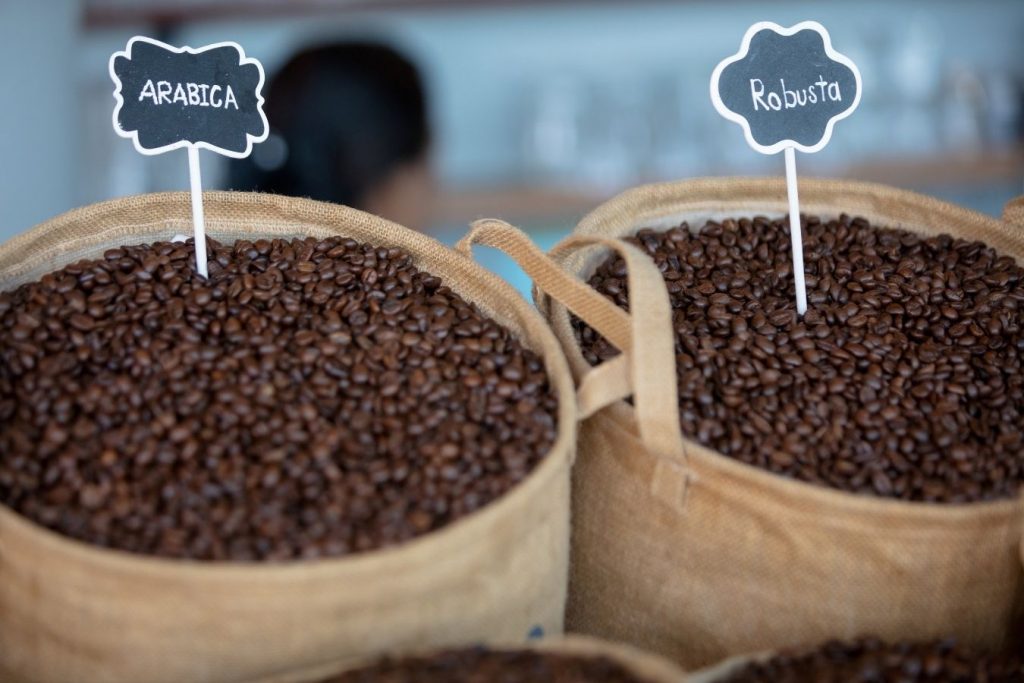
There are some critical characteristics between these two types of coffee that you need to distinguish:
Coffee with:
- Cross-pollination is required: Robusta flowers must be pollinated with certain flowers from plants with a different genetic composition than self-pollinating Arabica plants.
- Faster ripening: Robusta varieties bear fruit in about two years, while Arabica takes up to 4 years.
- High in caffeine: Robusta has twice as much caffeine as Arabica.
- Taste difference: Robusta has a more bitter taste than Arabica. This bitter taste is partly due to the higher caffeine content. It is also higher than bitter chlorogenic acid (CGA), which contains about 7-10% more CGA, of which Arabica has about 5.5-8% CGA. There is also half the sugar content in Robusta. Robusta has been described as having an earthier, more robust, and more bitter aroma than Arabica.
- Better Tolerance: The coffee tree is more resistant. It can withstand higher temperatures and grow better in direct sunlight. Due to its higher caffeine and chlorogenic acid content, Robusta is more resistant to pests and diseases than Arabica.
- More production: where Robusta produces more Robusta than Arabica coffee
- Less expensive: Robusta is more durable, ripens faster, and has more than Arabica – factors that make growing coffee less expensive. Along with that, the selling price of the product will be lower, so many brands to save costs still mix Robusta between Arabica.
- Seeds come in many different sizes and colors: Robusta beans are usually smaller, thicker, and rounder than Arabica beans.
- It is a “younger” coffee variety discovered about 100 years after Arabica coffee, so it is easier to develop on the world market.
- Larger leaves: Robusta leaves are more extensive than Arabica coffee leaves.
- Growing in the Eastern Hemisphere: Robusta is commonly grown in the Eastern Hemisphere, while Arabica is mainly grown in South America,
- Few chromosomes: Robusta has 22 chromosomes, while Arabica has 44 chromosomes.
Helena JSCted coffee beans, roasting green coffee, world coffee production, robusta coffee trees, coffee beans robusta, beans robusta coffee, arabica robusta coffee
